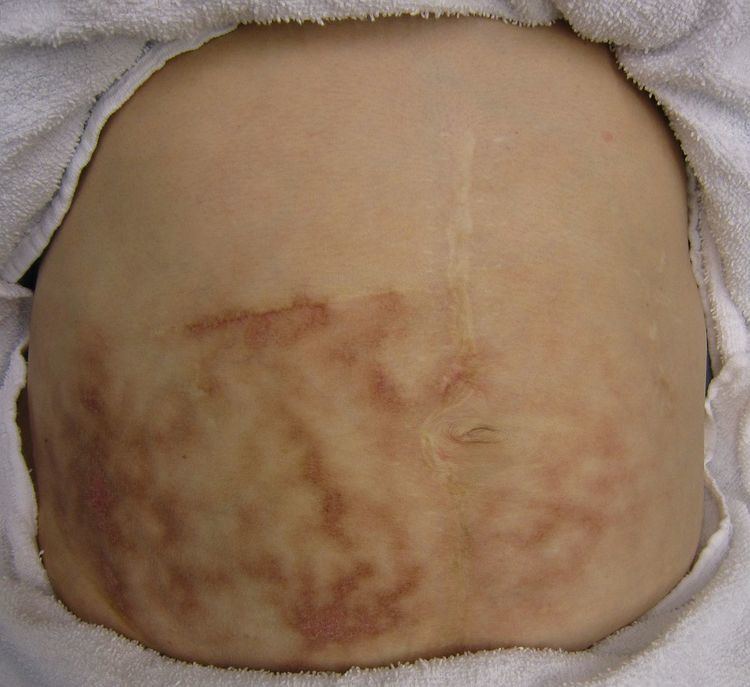Specialty dermatology ICD-9-CM 692.82 eMedicine derm/130 | ICD-10 L59.0 DiseasesDB 4438 | |
 | ||
Erythema ab igne (EAI, also known as hot water bottle rash, fire stains, laptop thigh, granny's tartan and toasted skin syndrome) is a skin condition caused by long-term exposure to heat (infrared radiation). Prolonged thermal radiation exposure to the skin can lead to the development of reticulated erythema, hyperpigmentation, scaling and telangiectasias in the affected area. Some people may complain of mild itchiness and a burning sensation, but often, unless a change in pigmentation is seen, it can go unnoticed.
Contents
Causes
Different types of heat sources can cause this condition such as:
Differential diagnosis
Pathogenesis
The pathogenesis of erythema ab igne remains unknown. It has been proposed that thermal radiation exposure can induce epidermal damage to superficial blood vessels that subsequently leads to vascular dilation. Subsequent hemosiderin deposition can occur in a reticular distribution. The vasodilation of vessels presents morphologically as the initially observed erythema. Red blood cell extravasion and deposition of hemosiderin that follows clinically appears as hyperpigmentation. It has also been proposed that the distribution of affected blood vessels — predominantly in the superficial subcutaneous plexus (found in the papillary dermis)— results in the net-like pattern of erythema ab igne skin lesions.
Treatment
Discontinuing contact with the heat source is the initial treatment of erythema ab igne. If the area is only mildly affected with slight redness, the condition may resolve itself in a few months. If the condition is severe and the skin pigmented and atrophic, resolution is unlikely. In this case, there is a possibility that a squamous cell carcinoma or a neuroendocrine carcinoma such as a Merkel cell carcinoma may form. If there is a persistent sore that does not heal or a growing lump within the rash, a skin biopsy should be performed to rule out the possibility of skin cancer. If the erythema ab igne lesions demonstrate pre-cancerous changes, the use of 5-fluorouracil cream has been recommended. Abnormally pigmented skin may persist for years. Treatment with topical tretinoin or laser may improve the appearance.
Epidemiology
Erythema ab igne was once commonly seen in the elderly who stood or sat closely to open fires or electric heaters; however, erythema ab igne has been reported in both young and elderly individuals. Women have a higher incidence of erythema ab igne than men. Although wide use of central heating has reduced the overall incidence of erythema ab igne, it is still sometimes found in people exposed to heat from other sources such as heating pads, space heaters, hot water bottles, and electronic devices.
